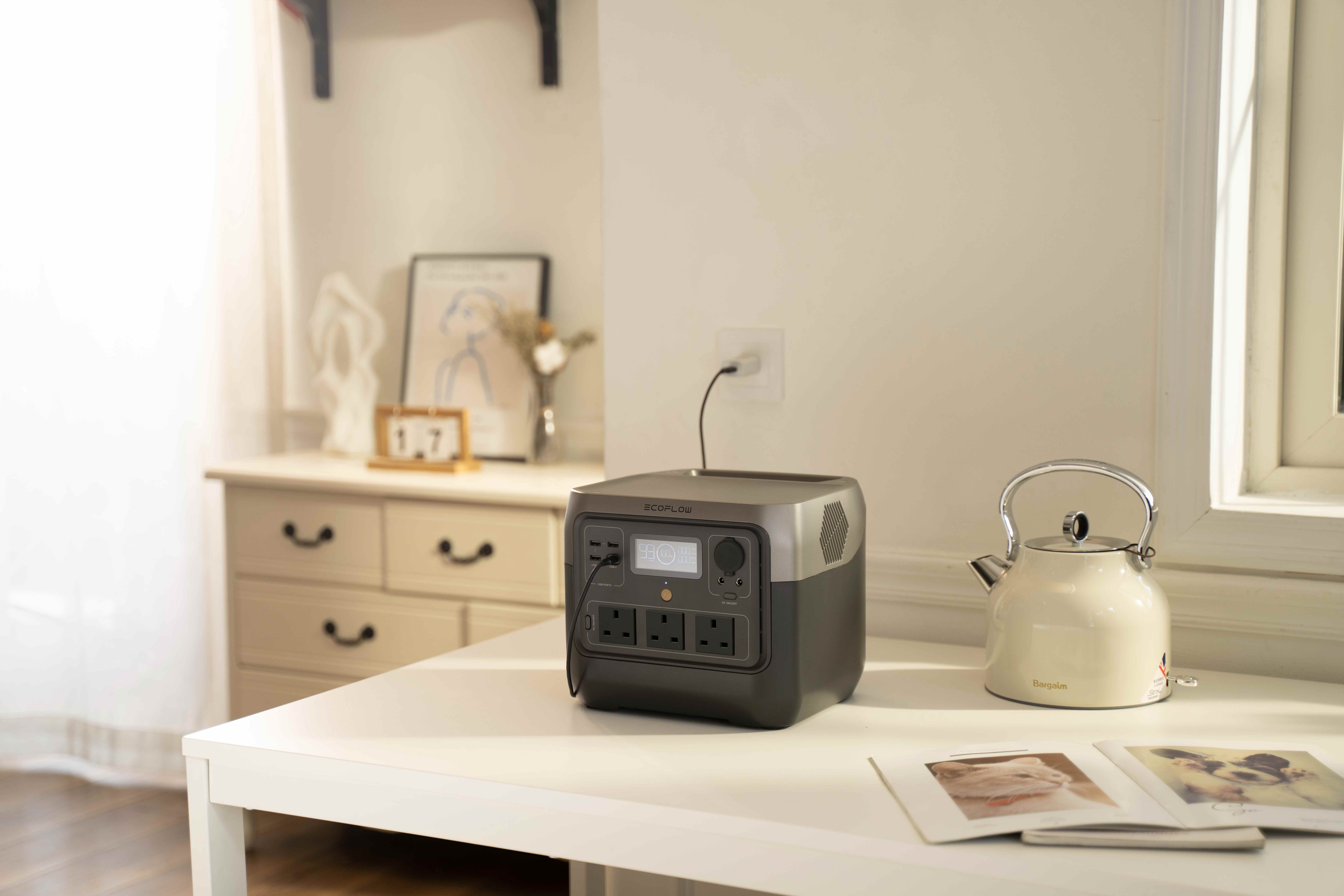What is UL Certification?
A Deep Dive into UL Certification and What It Means for You
When you're shopping for electronics or energy storage systems, you've probably noticed a small "UL" mark on the product label. But what does it actually mean? UL Certification isn't just a fancy badge; it's a safety guarantee that can protect your home, your business, and your investment. This guide provides a comprehensive overview of everything you need to know about UL Certification, from fundamental definitions to practical applications in energy storage.
What is UL Certification?
UL Certification is your assurance that a product has passed independent safety testing. When you're buying a phone charger or home battery system, that small UL mark means someone has done your heavy lifting of ensuring it won't burn or electrical shock.
UL Certification Basics
Founded in 1894, UL stands for Underwriters Laboratories, an independent safety testing organization with over 130 years of experience
Independent testing: Think of them as the referees of product safety—they test products to make sure they won't catch fire, shock you, or cause other hazards
Third-party verification: They're not a government agency, and they're not paid by manufacturers to rubber-stamp products—they use science-based testing to verify safety claims
Trusted authority: This independence is why the UL mark carries so much weight with retailers, insurers, and safety inspectors
Global recognition: While it started in the United States, many countries accept UL Certification as proof that a product meets basic safety standards
Market access: For manufacturers, getting UL certified opens doors to major retail chains and commercial buyers who won't touch uncertified products
Key Industries Needing UL Certification
UL Certification covers a vast quantity of products, yet three industries utilize it most prominently:
Electric/electronic products: From coffee machines to computer power supplies—if it goes into a wall outlet, there's a safe bet it needs UL Certification before it will find its way onto shelves at big-box stores
Energy storage systems: Becoming a major focus for UL as more homes and businesses adopt battery backup systems, where safety concerns around fire risk and electrical hazards have pushed certification requirements to the forefront
Building materials and fire safety equipment: Fire extinguishers, smoke detectors, and even certain types of doors carry UL marks to show they'll perform correctly when lives are on the line
What Are the Different Types of UL Certification?
Not all UL marks look alike. We have three in general; it's a gift's idea to know which one you're purchasing.
UL Listed Certification
This is the gold standard. When you see "UL Listed" on a product, it means the entire finished product has been tested and meets all applicable safety standards for its intended use. The testing is comprehensive—UL examines everything from electrical components to mechanical parts to software controls.
UL-Listed products can be introduced to the market as a finished, turn-key, ready-to-install product. A home appliance, portable power station, or complete energy storage product typically requires UL-listed certification. It has a control number that you can verify in UL's database. For a portable, consumer-facing example, consider EcoFlow’s portable power stations, such as the EcoFlow DELTA 2 and EcoFlow RIVER 2 Pro. The user documentation references the portable-device safety standard UL 2743 for portable power packs, providing buyers with a clear safety baseline to check before making a purchase.
UL Recognized Component Certification
This certification applies to components that are built into other products. You might find a battery cell, circuit board, or a charge control that's UL Recognized; however, they're not offered for retail sale to consumers. Here's the deal: just because the individual parts are UL Recognized, it doesn't mean the entire product receives the UL Listed badge immediately. The manufacturer still has to test the whole assembly. However, using UL-recognized components can significantly streamline the final certification process.
UL Classified Certificate
This is the most restricted type of certification. UL Classified products have been tested for specific properties or uses—not a comprehensive safety check. For example, a material could be UL Classified for fire resistance, but hasn't been checked for electrical safety.
You will find UL Classified markings on products such as industrial parts, building materials, and specialized equipment. You won't actually see it much on consumer products, as they generally prefer the complete UL Listed certification.
What UL Certifications are Engaged with Energy Storage Systems?
The storage of energy has experienced significant growth, and UL has developed specific standards to address the particular hazards that storage systems pose.
UL Standards for Energy Storage
Three key standards govern the design and performance of energy storage products.
UL 9540 covers total energy storage systems, the entire system, including batteries, inverters, and control units. It is the standard most applicable for both rooftop and commercial bath installations. For portable use cases (as opposed to fixed “whole-home” ESS), EcoFlow’s portable power stations—such as DELTA 2 Max and RIVER 2 Pro—fall under the UL 2743 category for portable battery-powered equipment, rather than UL 9540, which is reserved for stationary ESS.
UL 1973 is primarily concerned with batteries that are installed and remain in place, such as those used in stationary applications. It checks for conditions such as thermal runaway, overcharging, and short circuits. It's a battery system that doesn't move—whether it's in your house, a data center, or a telecom place—has to follow UL 1973. In the portable segment, models like EcoFlow DELTA 2 (≈1 kWh class) and EcoFlow RIVER 2 Pro (sub-1 kWh class) are sold as portable power stations; device-level safety is addressed by UL 2743 in their manuals, while any cell/module qualifications to other standards are referenced in product documentation where applicable.
UL 2580 is primarily concerned with batteries in electric vehicles. It may not sound imperative, but several portable power stations and mobile energy storage systems actually adhere to this standard, as companies like EcoFlow manufacture them. On the portable side, EcoFlow products such as RIVER 2 Pro and DELTA 2 note conformance in user documentation to UL 2743 (the portable battery-powered equipment standard), which is particularly helpful when comparing small power stations to whole-home ESS.


Battery Safety Requirements
Testing under these standards is pretty intense. UL really puts batteries through the wringer—they overcharge them, heat them, puncture them, and subject them to impact. The purpose is to ensure that when things go awry, the explosion won't cause a fire or blow up.
Particular attention is paid to thermal management. Batteries generate heat, and if this heat is not managed correctly, undesirable consequences occur. UL tests cooling vents, temperature sensors, and auto shut-offs to ensure they work correctly.
Electric safety encompasses everything from sound insulation to non-fault protection. UL assures that it won't produce hazardous situations where protective devices will open in the event of a problem.
Environment testing verifies that batteries will perform under extreme temperatures, humidity, and changes in altitude, without deterioration. They replicate on-the-job conditions under various climates and implementations.
How Does a Product Obtain UL Certification?
Let us work through how a typical product, such as a portable power station, performs its certification.
Pre-Certification Planning
The manufacturer first identifies which UL standards apply. For a portable power station, the standards typically include UL 2743 (portable battery-powered equipment) and UL 1973 for the battery pack itself. For portables, you’ll often see device-level evaluation to UL 2743 in the user manual (e.g., EcoFlow DELTA 2 and EcoFlow RIVER 2 Pro), while certain battery modules may reference additional standards in the product specifications.
The company then conducts a gap analysis. It compares standards pointwise with its current design. Perhaps a battery management system requires additional temperature sensors, or the overcurrent protection for the charging circuit needs to be improved. Such spots are fixed before the samples are produced.
Timelines vary from product complexity to test iterations, ranging from a couple of weeks to a few months.
Testing and Evaluation
The factory sends several product samples out to a UL test laboratory. UL literally tears these apart—sometimes physically. They inspect the construction, take electrical measurements, and perform both typical operating tests and abuse tests.
For energy storage systems, abuse testing is grueling. UL might force the battery to overcharge until something fails, then verify that the systems prevent fire or explosion. They'll test at extreme temperatures, simulate short circuits, and even drop the unit from various heights.
Documentation is crucial throughout testing. UL needs complete technical drawings, component specifications, and manufacturing procedures. Any changes during testing require updated documentation.
Factory Inspection and Ongoing Compliance
Successfully passing lab tests isn't the end of the story. UL audits the factory production facility to confirm that production units will resemble the test samples. They examine quality control measures, test equipment calibration, and employee training.
UL conducts unannounced certification follow-ups on average, twice a year or quarterly. Inspectors randomly sample production lots and verify that they remain in compliance with the specified requirements. If quality standards are not met, UL may suspend or revoke certification.
The reason UL certification actually matters is the ongoing surveillance it entails. It's not just a one-time thing—it's about consistently maintaining those safety standards.


Frequently Asked Questions
Q1. Does UL Certification Affect My Homeowner’s Insurance When Installing Energy Storage?
Yes, and it can work in your favor. Most homeowner's insurance policies require that major electrical installations meet recognized safety standards. When you install a UL-certified energy storage system, you're demonstrating compliance with these requirements, which can prevent claim denials if something goes wrong. Some insurers even offer premium discounts for homes with UL-certified backup power systems because the fire and electrical hazard risks are lower. Before installation, contact your insurance agent to confirm their specific requirements and ask about potential savings. Non-certified systems may void coverage or require expensive riders to be added to your policy.
Q2. Can I Trust Cheap Imported Products That Claim to Have UL Certification?
This is where you need to be careful. Some manufacturers fake UL marks or display them incorrectly. Always verify certification through UL's Product iQ database at ul.com/database—just enter the company name or UL file number from the label. Legitimate UL marks include a specific control or file number that you can cross-reference. If a seller can't provide this number, or if the database shows no match, walk away. The price difference between certified and non-certified products exists for a reason—real testing costs money. Counterfeit marks are surprisingly common on online marketplaces, making verification essential before making a purchase.
Q3. Will My UL Certified Product Work Safely in Other Countries?
Not automatically. UL certification primarily covers US and Canadian safety standards. While UL is respected globally, many countries require their own certifications, such as CE marking for Europe, CCC for China, and PSE for Japan, among others. Some UL-certified products do meet international standards and carry multiple marks, but you can't assume this. If you're traveling or relocating internationally with energy storage equipment, check both the destination country's import requirements and the product's actual certifications. For permanent installations abroad, you'll likely need products certified to local standards, not just those certified to UL.
Moving Forward with UL Certification
UL Certification represents more than just a testing requirement—it's proof that a product has been designed and engineered with safety as a top priority. For energy storage systems, especially, where battery fires and electrical hazards pose real risks, certification isn't optional if you want to compete seriously in the market.
Whether you're a manufacturer planning your next product launch or a buyer evaluating energy storage options, understanding UL standards helps you make informed decisions. Ready to take the next step? Visit UL.com to access their product database, verify certifications, and connect with testing representatives who can guide your specific application.
Shortlisting portable power? Look at EcoFlow’s DELTA 2, DELTA 2 Max, and RIVER 2 Pro portable power stations. The device manuals reference UL 2743 for portable power packs, allowing you to review the documentation and validate safety claims before making a purchase.